Joong aka Bak Chang, Zongzi, Chinese Glutinuous Dumpling
I can’t quite believe it but my first foray into making joong turned out delicious, authentic tasting, and while it is no where near perfect, it does look semi-respectable!
It does, as feared, take quite a bit of work. But thankfully, it was not as hard as I thought it would be. While I pat myself on the back (even as I am busily stuffing my face with one of my favourite foods), the success of my first batch of joong might be due more to luck than talent.
Anyway I looked at endless videos and written recipes. In the end, I have just kind of mish-mashed them together in my mind, took a breath, and just went for it. So here is my rough shod version.
You can see from the photo above, that I produced 7 bak changs in this first attempt. So the ingredient amounts below will produce approximately that amount.
Note: the amount of each ingredient is not written in stone. Adjust to your own preference/taste. (I love split mung beans aka “luk dau”, so I have lots of it in my joong). Also, I don’t eat pork so the meat I used is chicken.
Joong – the Cantonese White version which I love best
Ingredients:
MARINATE MEAT (3 hours or overnight)
- chicken pieces – sliced (it is normally pork. But I don’t eat pork. So.)
- a bit of dark soy sauce
- a bit of oyster sauce
- a bit of light soy sauce
- a bit of Chinese (Shaoxing) Rice wine
- a little bit of sugar
- a small bit of salt
- a touch of sesame oil
- 5 Spice powder
- (opt) ginger juice
SOAK OVERNIGHT ( soak separately in cold water)
- Bamboo leaves (14-18 pieces) – submerge in cold water and soak overnight. Place a heavy lid or bowl on top to help leaves submerge
- a large bowl of glutinous rice (approximately 2.5 cups)
- a large bowl of split mung beans (approximately 2 cups)
- a handful of dried prawns (har mai)
- about 7-8 dried chestnuts
- a large handful of shitake/Chinese mushrooms (sliced)
========
- salted (duck or chicken) egg yolks
- (opt) lap cheong (Chinese sausage) – cut into tiny cubes
Note: I used store bought salted duck eggs here. But in future, I might be using salted chicken eggs which I will make myself. They will be cheaper and easier to get. I will be writing up the summary recipe on how to make your own salted eggs soon.
METHOD – How to Make Joong
(This is now the day after the overnight soaking.)
- BAMBOO LEAVES – drain from water. Boil large pot of hot water. Add tablespoon of oil into pot. Blanch bamboo (about 1-2 mins). Remove, cool leaves, and pat dry.
Snip off pointy ends of bamboo leaves.
Note: the soaking softens the bamboo leaves, the oil makes the leaves less prone to breaking or splitting. - DRAIN – drain all the ingredients you soaked the previous night.
- RICE – mix well into the drained rice:
• a touch of sesame oil
• 1T of veg oil
• some salt to taste
• some powder chicken stock - FRYING (opt) – You can fry the drained ingredients (separately) if you like. Even the marinated meat. (Some recipes do that). I only gave the har mai a quick fry. I decided to lessen the amount of work. (And the end result justified my choice as even without this step of frying, my joong tasted just like the real thing. And the way I love it.)
- WRAP JOONG – Once all your ingredients are ready, you can wrap your joong.(My wrappings were only so so. Need more experience. And you can also see in the photo above that my wrapping styles were not consistent. I was testing out the various methods for wrapping the joong. )
Note: use the smooth (unveined) side of leaves for wrapping inside. The central large vein should be on the outside when you wrap the joong. I used hemp twine to finish and secure wrapped bak chang. You can use cotton cooking twine or even the strings that sometimes come with a pack of bamboo leaves. - STUFFING – the main thing about putting the stuffing in is:
– start with rice layer
– next, a layer of mung beans
– then the other ingredients in any sequence or qty you desire
– then a layer of mung beans
– then finish with layer of rice.
Press down and Wrap! - BOIL – once all wrapped, boil large pot of water. Submerge all wrapped joong into boiling water. Make sure they can all be submerged. Place heavy plate on top to prevent them from floating up. Cover pot.
Boil for 1.5-2 hours. Check occasionally that there is sufficient water.
References
Below are Joong Videos that I found quite useful. They each have their own ingredients. I only used them to see their methods and to learn how they wrapped their joongs.
- Pork Zongzi (in Mandarin) by Amanda Tastes on YouTube
- Healthy Whole Grain Zongzi (in Mandarin, with Eng subtitles) – this one usefully demonstrates 4 different ways of wrapping the bak chang.
Is Sticky Rice (Glutinous Rice) Healthy?
This is just out of interest because I have been told not to eat joong too much or too often. Which made me wonder if Glutinous Rice is healthy or not. So it is with pleasure and surprise I found this article “6 Proven Benefits of Sticky Rice“. I feel much happier now
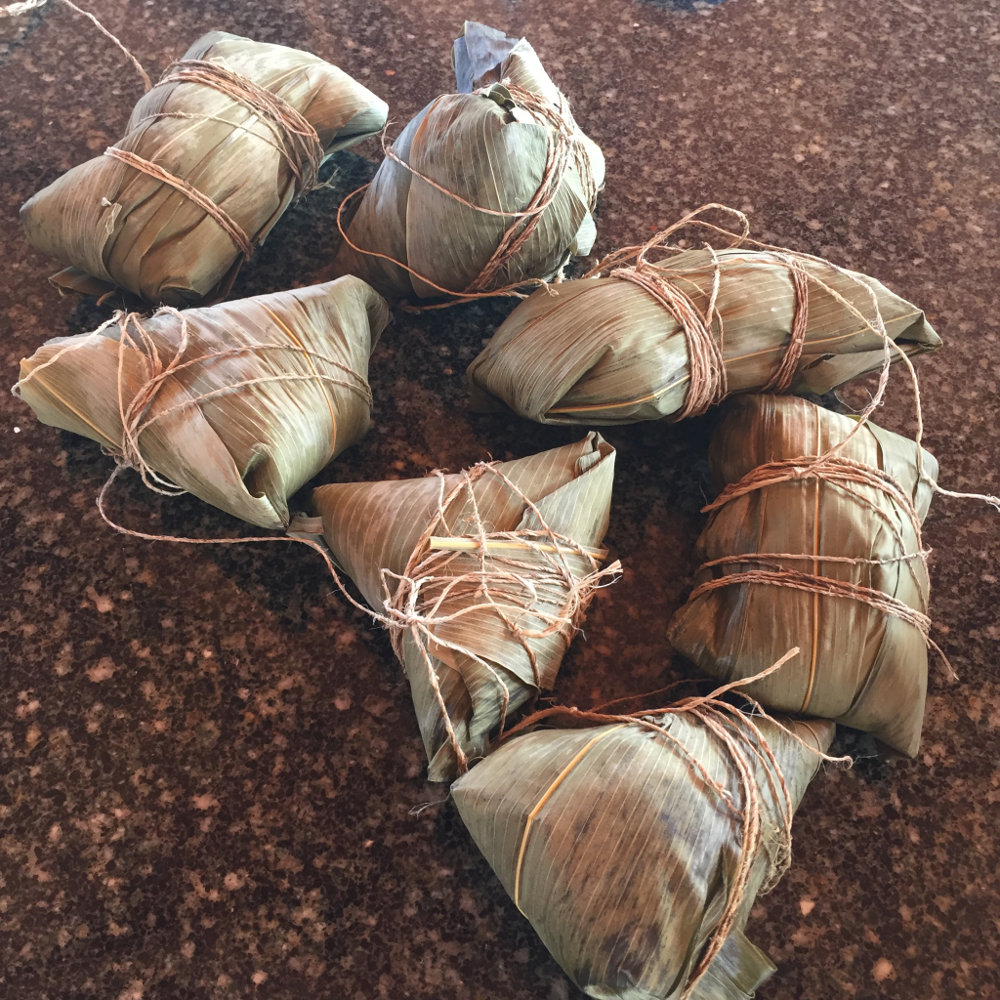
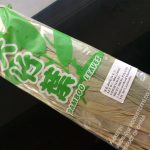
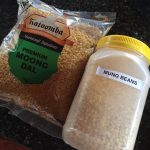
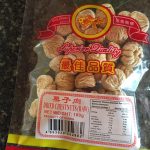
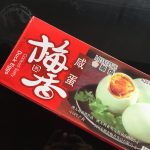
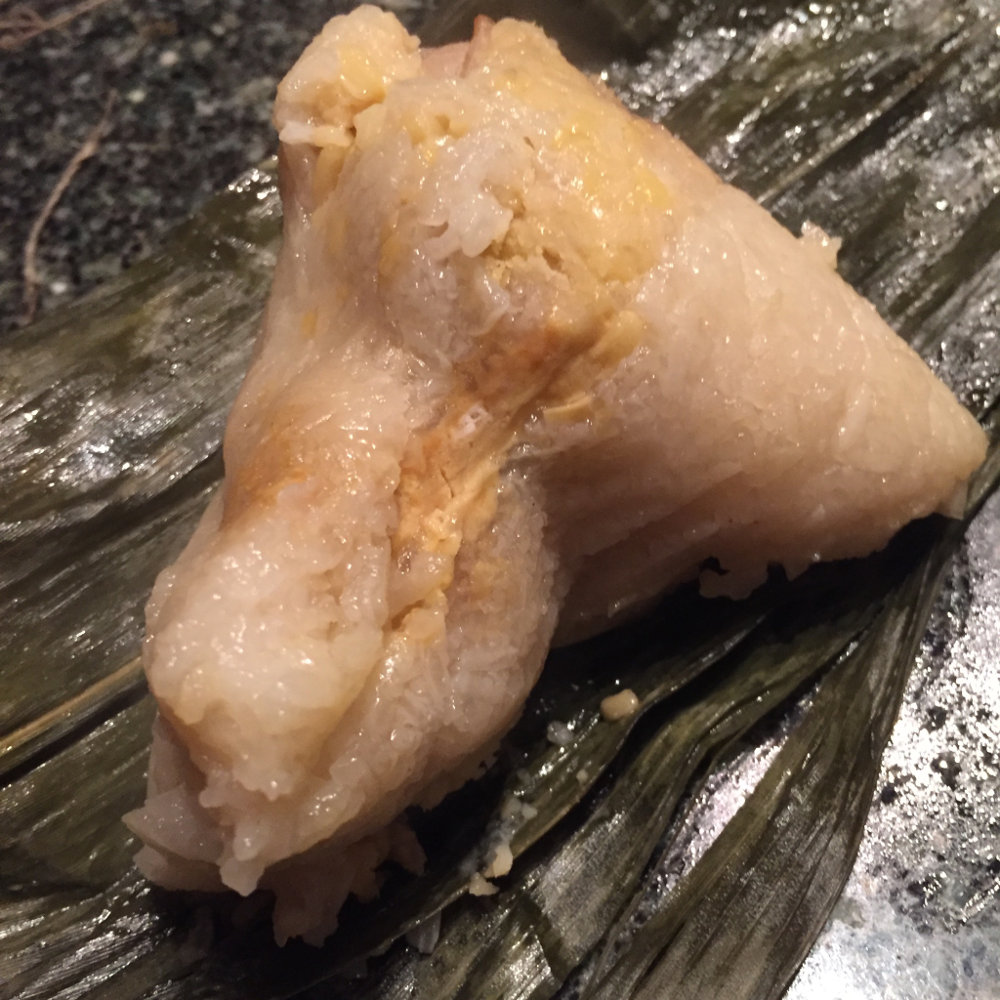


Share your Thoughts ...